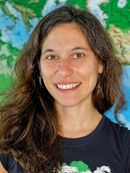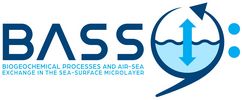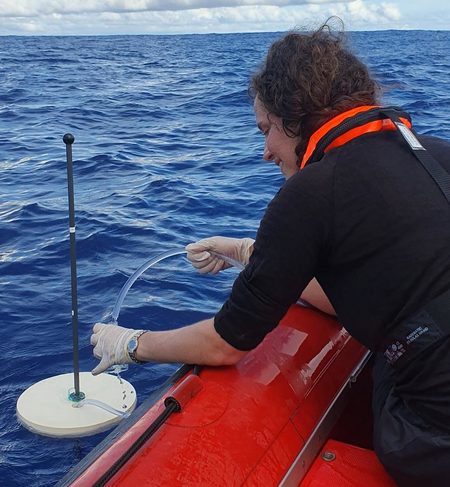
Prof. Dr. Hermann Bange
GEOMAR Helmholtz Centre for Ocean Research Kiel
Principal Investigator

Dr. Christa Marandino
GEOMAR Helmholtz Centre for Ocean Research Kiel
Principal Investigator

Dr. Dennis Booge
GEOMAR Helmholtz Centre for Ocean Research Kiel
PostDoc

Lea Lange
GEOMAR Helmholtz Centre for Ocean Research Kiel
PhD-student
BASS SP 2.1
The influence of the SML on trace gas biogeochemistry and air–sea gas exchange
Our motivation stems from laboratory and in situ evidence that the sea-surface microlayer (SML) greatly impacts the biogeochemical cycling of climate-active and atmospherically important trace gases, such as carbon dioxide (CO2), carbon monoxide (CO), methane (CH4), nitrous oxide (N2O), and dimethyl sulfide (DMS): (i) recent studies from the PASSME and SOPRAN projects have emphasized that accumulations of surface-active substances (i.e., surfactants) have a strong (dampening) effect on both CO2 and N2O fluxes across the SML/atmosphere interface, and (ii) trace gases can be produced and consumed by (micro)biological or by (photo)chemical processes. Therefore, the upper ocean, including the SML, can be a distinct source or sink for these gases, as compared to waters deeper in the mixed layer, with clear relevance to the BASS research unit. Concentrations of CO2, N2O, and other gases in the SML (or upper centimeters of the ocean) have been shown to be different from their bulk concentrations below the SML.
Typically, the net sources and sinks of important trace gases to the atmosphere are computed using concentrations measured in the mixed layer and with gas transfer velocities that do not take the SML into account. These discrepancies will culminate in incorrectly calculated flux values, which can lead, subsequently, to large uncertainties in computed climate forcing and air quality in Earth system models. By linking our trace gas measurements with measurements of (i) the dynamics and molecular characteristics of organic matter and carbon specifically (SP1.1; SP1.5), (ii) biological diversity and metabolic activity (SP1.2), (iii) the optical properties of organic matter (SP1.3), (iv) the photochemical transformation of organic matter (SP1.4), and (v) physical transport processes (SP2.3), we will gain a comprehensive understanding of how the SML drives trace gas flux variability.


